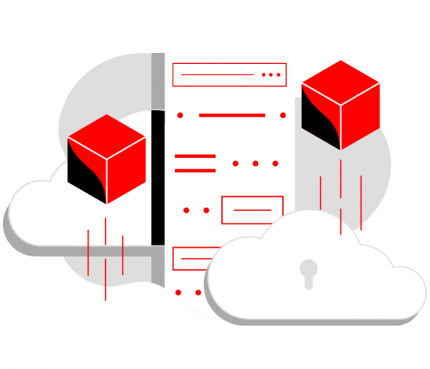Recently, I spotted a question on a mailing list asking how to move container images from an internal/build registry to a production one. To put it another way: how would you copy images from registry A to registry B? I’m going to show you a really easy way to do this with Skopeo.
The first approach is simple, and it’s what most people would do:
Pull the image from internal.registry/myimage:latest Tag the image with production.registry/myimage:v1.0 Push to production.registry/myimage:v1.0
This works reasonably well and many people are already used to doing it with the docker command:
docker pull internal.registry/myimage:latestdocker tag internal.registry/myimage:latest production.registry/myimage:v1.0docker push production.registry/myimage:v1.0
This approach has some downsides though:
- The user needs to have
dockerinstalled on the system. - The
dockerdaemon needs to be started on the system. - The
dockerdaemon runs with privileges.
This approach is quite heavy for a simple operation such as copying an image from one registry to another. Suppose that all you do on a system is copying an image from the internal/build registry to the production registry. Do you really need a fully privileged docker daemon up and using resources on your system?
Enter skopeo copy
Skopeo is a command line tool for working with remote image registries. Skopeo doesn’t require a daemon to be running while performing its operations. In particular, the handy skopeo command called copy will ease the whole image copy operation. Without further ado, you can copy an image from a registry to another simply by running:
skopeo copy docker://internal.registry/myimage:latest /
docker://production.registry/myimage:v1.0
The copy command will take care of copying the image from internal.registry to production.registry. Notice how the tagging operation went away by specifying the desired image name for the production registry directly in the command.
Say your production registry requires credentials to login in order to push the image, skopeo can handle that as well:
skopeo copy --dest-creds prod_user:prod_pass docker://internal.registry/myimage:latest /
docker://production.registry/myimage:v1.0
The same goes for credentials for the source registry (internal.registry) by using the --src-creds flag.
Afterwards, on your production machine, you can simply pull the image with docker:
$ docker pull production.registry/myimage:v1.0
 Scopri di più su Red Hat Universal Base Image (UBI)
Scopri di più su Red Hat Universal Base Image (UBI)
Beyond remote registries
Now, skopeo copy isn’t limited to remote containers registries. The image prefix docker:// from the above commands define the transport to be used when handling the image.
You may have guessed the docker:// transport is for remote docker registries, but there are others:
atomiccontainers-storagedirdockerdocker-daemondocker-tarociostree
You can work with any of them, and use them to copy containers from one format to another.
Availability
Skopeo is open source software available on GitHub. It is also available in Red Hat Enterprise Linux as of version 7.2.6 in the Extras Channel and the rhel-tools image.
In addition to copying images, Skopeo also lets you sign images, inspect images and more, all with a very small presence on your machine. You can find more information on skopeo on the README.md on GitHub and you can also refer to man skopeo, skopeo -h and skopeo copy -h.
Ricerca per canale
Automazione
Le ultime novità sulla piattaforma di automazione che riguardano la tecnologia, i team e gli ambienti
Intelligenza artificiale
Aggiornamenti sulle piattaforme che consentono alle aziende di eseguire carichi di lavoro IA ovunque
Servizi cloud
Maggiori informazioni sul nostro portafoglio di servizi cloud gestiti
Sicurezza
Le ultime novità sulle nostre soluzioni per ridurre i rischi nelle tecnologie e negli ambienti
Edge computing
Aggiornamenti sulle piattaforme che semplificano l'operatività edge
Infrastruttura
Le ultime novità sulla piattaforma Linux aziendale leader a livello mondiale
Applicazioni
Approfondimenti sulle nostre soluzioni alle sfide applicative più difficili
Serie originali
Raccontiamo le interessanti storie di leader e creatori di tecnologie pensate per le aziende
Prodotti
- Red Hat Enterprise Linux
- Red Hat OpenShift
- Red Hat Ansible Automation Platform
- Servizi cloud
- Scopri tutti i prodotti
Strumenti
- Formazione e certificazioni
- Il mio account
- Risorse per sviluppatori
- Supporto clienti
- Calcola il valore delle soluzioni Red Hat
- Red Hat Ecosystem Catalog
- Trova un partner
Prova, acquista, vendi
Comunica
- Contatta l'ufficio vendite
- Contatta l'assistenza clienti
- Contatta un esperto della formazione
- Social media
Informazioni su Red Hat
Red Hat è leader mondiale nella fornitura di soluzioni open source per le aziende, tra cui Linux, Kubernetes, container e soluzioni cloud. Le nostre soluzioni open source, rese sicure per un uso aziendale, consentono di operare su più piattaforme e ambienti, dal datacenter centrale all'edge della rete.
Seleziona la tua lingua
Red Hat legal and privacy links
- Informazioni su Red Hat
- Opportunità di lavoro
- Eventi
- Sedi
- Contattaci
- Blog di Red Hat
- Diversità, equità e inclusione
- Cool Stuff Store
- Red Hat Summit
